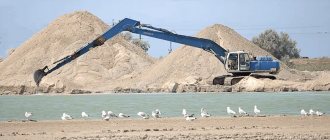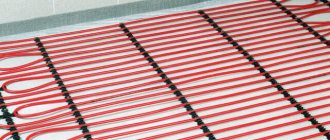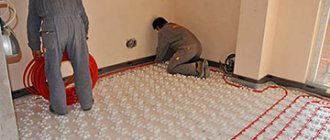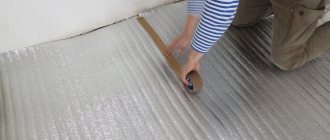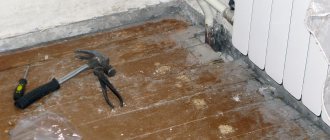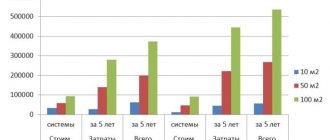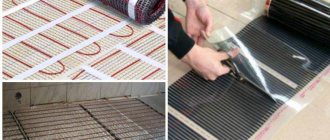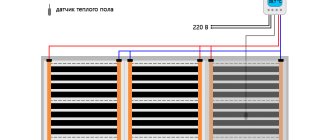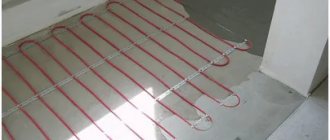Tamper for compacting soil, sand or gravel.
Vibrating plates (rammers) are rightly called professional construction machines. They are used to compact the soil, lay asphalt, paving slabs, and also eliminate various defects and unevenness of the road surface. Such a tool is quite simple to operate, but still, do not forget about standard safety precautions, as well as the peculiarities of performing work for different materials, such as soil, sand, crushed stone, asphalt, tiles and “litter” under the floor.
General information
What is it for?
Tamping, i.e. The vibrating plate consists of five main elements. This is an engine , which can be gasoline, electric or diesel, and drives all the parts of the tool. The belt drive helps transfer torque from the engine to the eccentric . This, in turn, helps create vibration vibrations in order to perform compaction.
The impact on the surface being processed is created using the base plate, and everything can be controlled using the operator’s handle. The vibrating plate has a heavy and powerful base, which, together with vibration at high frequencies, allows for compaction of the surface. The efficiency of the work done will depend on the power of the device and the size of its electric or gasoline engine. In most models, the devices are quite maneuverable, and this makes it possible to perform tasks even on inconvenient and sometimes curved surface areas.
Application area
The pneumatic soil compactor was created to compact bulk materials using an oscillating motion. After the materials are poured onto the surface, their particles will not be located close enough to each other. To ensure that they fit as tightly as possible to each other, you should use a tamper. This will help change the load-bearing properties of some of the materials so that construction work can be carried out on this surface in the future. Compacting with a vibrating plate is used for a large number of construction areas.
It is especially often used for such cases:
Road construction.- Laying lawns.
- Creation of a bulk cushion for the foundation in a large number of buildings, as well as on the floors of tall buildings.
- Construction of car parks and sports grounds.
- Laying asphalt.
- Seals for trenches and pits, laying utilities.
In special cases, compaction is used to lay paving slabs and paving stones. This makes it possible to complete work several times faster.
How to work with it correctly?
To start using a vibrating plate, no special skills are required.
Anyone can cope with this task if they remember the safety rules and act extremely carefully:
- Before starting work, the vibrating plate should be inspected very carefully to see if there are any problems with it. Particular attention should be paid to the protective cover for the transmission belt, as it protects the engine from dust. If the vibrating plate runs on diesel or gasoline, then it is necessary to check the presence of oil and fuel in the engine.
The area you plan to treat with the vibrating plate should be well leveled and clear of debris. Do not work on a dry or very wet surface immediately after heavy rain.- The mechanism should be started. In 80% of models, all you need to do is press the “START” button. Some vibrating plates also have a manual starter, so to use such models you should gently start pulling the cord and wait until the equipment warms up well. Start the engine only on a level surface.
- The operator of the device must be behind the vibrating plate during work. He should not bend too much over the device or try to speed up the progress of work using artificial methods. the tool will operate in a precise mode that will be selected according to the surface.
- A special handle must be used to control the vibrating plate to tamp and compact the soil. It allows the device to rotate in all directions. After turning, you should quickly move behind the slab so as not to accidentally injure yourself.
Do not forget that you should change the consumables of the device in a timely manner. The oil should be changed at least once a month, or every 100 hours of operation. You should only use gasoline and oil of the approved brand, as otherwise this will lead to the vibrating plate quickly failing. The grades of gasoline and oil must correspond to those specified by the manufacturer in the technical manual for the device. Before compacting any bulk materials, the surface to be processed should be cleaned. To do this, you should remove various debris from it - fragments of bricks, pieces of boards, cobblestones.
Sand
Compaction of the sand mixture is carried out using a different technology.
Operating principle for vibrating plate tamping:
- An even layer of sand should be poured onto the prepared surface. Its thickness must be at least 60 cm. Specific indicators will depend on how much your device weighs.
- The entire surface should be moistened evenly with water.
- After this, the vibrating plate should be passed over the entire area at least 4 times.
- If the sand has acquired the required density, then you can add a second layer, and if it is loose enough, then go through the device a couple more times.
- On the second poured layer, repeat everything again.
When compaction is completed, the surface compaction coefficient should be at least 0.95. If you plan to install columns in the selected area, then the use of additional equipment may be required for compaction.
Just as when compacting the soil with a manual tamper, the sand should also be moistened; this is a mandatory item in the plan. If this is not done, then during operation the vibration plates will begin to create a lot of dust, and this, in turn, will cause the air cleaning filters to quickly become clogged (this is especially true for vibration plates on a gasoline engine). But keep in mind that you cannot use too much water, as otherwise it will begin to clog between the material and interfere with its effective bonding. To achieve the required cementing effect, water should be poured, but in moderation.
Priming
Sandy soil is best suited for creating small buildings. The fact is that it is the one that does not retain moisture well, and because of this it will not be susceptible to frost heaving. Such soils can push out the foundation in winter and are therefore not suitable for construction. During the installation of buildings, they (or weak soil) should be removed and replaced with sand. To compact using a vibrating plate, go through the entire area 3 times. If after this it is not possible to achieve the required result, then the layer of material should be smaller. Wet the soil until it begins to crumble when squeezed in your palm.
Please note that vibrating plates cannot be used to compact clay soil and loam, and vibratory rollers are better suited for this purpose.
Crushed stone
The difficulty in working with a material such as crushed stone is that it does not have the same fraction. For this reason, it is possible to select the maximum possible thickness in each specific case only on site and immediately before starting work. After pouring one layer of material and four passes over it, the compaction coefficient should be determined, which should be at least 0.95. If the crushed stone remains loose after compaction, then further manipulations will not yield results. You will have to remove some of the material to make the layer thinner and repeat the procedure.
For effective work, professionals recommend starting the process with the thinnest layer. After this, as you progress, you should increase the thickness to the required quality-performance ratio. This way it will be easiest to determine the sufficient thickness of the layer. If crushed limestone is compacted, then most often the result is a clinking effect. This happens because the stones stick together in the upper layer due to vibrations due to the fact that there is no compaction of the lower stones. To avoid this situation, you should use heavy vibrating plates weighing 150 kg or more. If only those units are available that weigh 100 kg, then it will be possible to lay only 1-2 cm of stones with them.
Laying paving slabs
The only feature of laying paving slabs is a rubber or polyurethane mat. It should be secured to the work plate so that the fragile material is not damaged. For tamping, you should choose mats made from polyurethane, as they will not leave dark marks on the polyurethane and will last much longer. The power of the vibrating plate must be medium.
Please note that you cannot tamp device tiles that weigh more than 90 kg. Heavy models sometimes cause cracks to form on the surface.
Laying asphalt
To compact asphalt crumbs after laying, vibrating plates should be used, all of which weigh from 60 to 90 kg. If the unit is heavier, it sometimes causes cracks, bumps and chips in the asphalt surface. The device should be walked about 2-3 times. The height of the layer will be determined by the characteristics of the coating.
Floor underlayment
For houses that were installed on the ground, a soft underlying layer should be created. It should be made of two layers, which must be poured on top of crushed stone or gravel. After laying each layer, it should be moistened and compacted using a vibrating plate. The material for work should be washed quarry or river sand, and to make the coating even, you should first install and then remove the pegs.
Relative compaction coefficient
Carrying out numerous procedures for extraction, transportation, and storage, it is obvious that the bulk density changes somewhat. This is due to the compaction of sand during transportation, long-term storage in the warehouse, absorption of moisture, changes in the level of looseness of the material, and grain size.
In most cases, it is easier to use a relative coefficient - this is the ratio between the density of the “skeleton” after mining or being in a warehouse to the one it acquires when reaching the final consumer.
Knowing the standard that characterizes the density during mining, indicated by the manufacturer, it is possible to determine the final coefficient of the soil without conducting constant surveys.
Information about this parameter must be indicated in the technical and design documentation. Determined by calculations and the ratio of initial and final indicators.
Density
This method assumes regular deliveries from one manufacturer and no changes in any variables. That is, transportation occurs using the same method , the quarry has not changed its quality indicators, the duration of stay in the warehouse is approximately the same, etc.
To perform calculations, it is necessary to take into account the following parameters:
- characteristics of sand, the main ones are the compressive strength of the particles, grain size, caking ability;
- determination of the maximum density of the material in laboratory conditions when adding the required amount of moisture;
- bulk weight of the material, that is, density in the natural environment of location;
- type and conditions of transportation. The worst impact is on road and rail transport. Sand is less subject to compaction during sea deliveries;
- weather conditions when transporting soil. It is necessary to take into account humidity and the likelihood of exposure to sub-zero temperatures.
How to calculate density during excavation from a pit
Depending on the type of pit, the level of sand extraction, its density also changes. In this case, the climatic zone in which resource extraction work is carried out plays an important role. The documents define the following coefficients depending on the layer and region of sand production.
| Subgrade level | Layer depth, m | With advanced coating | Lightweight or transitional coatings | ||
| Climate zones | |||||
| I-III | IV-V | II-III | IV-V | ||
| Upper layer | Less than 1.5 | 0,95-0,98 | 0,95 | 0,95 | 0,95 |
| Bottom layer without water | More than 1.5 | 0,92-0,95 | 0,92 | 0,92 | 0,90-0,92 |
| Floodable part of the underlying layer | More than 1.5 | 0,95 | 0,95 | 0,95 | 0,95 |
In the future, on this basis, you can calculate the density, but you need to take into account all the effects on the soil that change its density in one direction or another.
When compacting material and backfilling
Backfilling is the process of filling a pit , previously dug, after the construction of the necessary buildings or carrying out certain work. Usually filled with soil, but quartz sand is also often used.
Tamping is considered a necessary process for this action, as it allows you to restore the strength of the coating.
To perform the procedure, you must have special equipment. Typically, impact mechanisms or those that create pressure are used.
backfilling
Vibrating stamps and vibrating plates of varying weights and power actively used in construction
Vibrating plate
The compaction coefficient also depends on the compaction and is expressed as a proportion. This must be taken into account, since as compaction increases, the volumetric area of sand simultaneously decreases.
It is worth considering that all types of mechanical, external compaction can only affect the top layer of the material.
The main types and methods of compaction and their effect on the upper layers of soil are presented in the table.
| Seal type | Number of procedures using the Proctor method 93% | Number of procedures using the Proctor method 88% | Maximum thickness of the treated layer, m |
| With your feet | – | 3 | 0,15 |
| Hand stamp (15 kg) | 3 | 1 | 0,15 |
| Vibrostamp (70 kg) | 3 | 1 | 0,10 |
| Vibrating plate – 50 kg | 4 | 1 | 0,10 |
| 100 kg | 4 | 1 | 0,15 |
| 200 kg | 4 | 1 | 0,20 |
| 400 kg | 4 | 1 | 0,30 |
| 600 kg | 4 | 1 | 0,40 |
To determine the volume of backfill material, the relative compaction coefficient must be taken into account. This is due to changes in the physical properties of the pit after sand is pulled out.
When pouring a foundation, you need to know the correct proportions of sand and cement. By clicking on the link, you will become familiar with the proportions of cement and sand for the foundation.
Cement is a special bulk material, which in its composition is a mineral powder. Here is about the different brands of cement and their applications.
With the help of plaster, the thickness of the walls is increased, which increases their strength. Here you will find out how long it takes for plaster to dry.
By extracting quarry sand, the quarry body becomes looser and gradually the density may decrease slightly. Periodic density tests should by a laboratory, especially when the composition or location of the sand changes.
For more information about sand compaction during backfilling, watch the video:
How to determine the density of the sand layer during transportation
Transportation of bulk materials has some peculiarities, since the weight is quite large and a change in the density of resources is observed.
Basically, sand is transported using road and rail transport, and they cause shaking of the load.
Transportation by car
Constant vibration shocks to materials act on it in a similar way to compaction from a vibrating plate. Thus, constant shaking of the load, possible exposure to rain, snow or sub-zero temperatures, increased pressure on the lower layer of sand - all this leads to compaction of the material.
Moreover, the length of the delivery route is directly proportional to compaction until the sand reaches the maximum possible density.
Sea deliveries are less affected by vibrations, so the sand retains a greater level of looseness, but some slight shrinkage is still observed.
Transportation by sea
To calculate the amount of building material, it is necessary to multiply the relative compaction coefficient, which is calculated individually and depends on the density at the starting and ending points, by the required volume included in the project.
How to calculate in a laboratory setting
It is necessary to take sand from the analytical stock, about 30 g. Sift through a sieve with a 5 mm mesh and dry the material until it reaches a constant weight. Bring the sand to room temperature. Dry sand should be mixed and divided into 2 equal parts.
Next, you need to weigh the pycnometer and fill 2 samples with sand. Next, add distilled water in the same amount to a separate pycnometer, approximately 2/3 of the total volume, and weigh again. The contents are mixed and placed in a sand bath with a slight slope.
To remove air, boil the contents for 15-20 minutes. Now you need to cool the pycnometer to room temperature and wipe it off. Next, add distilled water to the mark and weigh.
Next we move on to calculations. A technique that helps determine density and the basic formula:
P = ((m – m1)*Pв) / m-m1+m2-m3 , where:
- m – mass of the pycnometer when filled with sand, g;
- m1 – weight of an empty pycnometer, g;
- m2 – mass with distilled water, g;
- m3 – weight of the pycnometer with the addition of distilled water and sand, after getting rid of air bubbles
- Pv – water density
In this case, several measurements are taken based on the number of samples provided for testing. The results should not differ by more than 0.02 g/cm3. In case of large consumption of the received data, the arithmetic average number is displayed.
Estimates and calculations of materials and their coefficients are the main component of the construction of any objects, as it helps to understand the amount of material needed, and, accordingly, the costs.
To correctly draw up an estimate, you need to know the density of the sand; for this, information provided by the manufacturer is used, based on surveys and the relative compaction coefficient upon delivery.
Safety precautions for work
When compacting soil with a pneumatic primer and using it for other materials, you should first go through the safety regulations.
Of the recommendations that already exist, remember the following:
- For safe operation, the operator must cover his body and face with personal protective equipment, namely headphones, glasses, hard hats, durable clothing and shoes.
- If work will be carried out on a small hill, then the operator and other workers must be above the device. The work should be done from top to bottom.
If for some reason the vibrating plate encounters an obstacle, you should immediately turn it off. After this, remove the obstacle, and the tool should be inspected to ensure that it does not have any malfunctions.
- Do not leave the device while it is running unattended. When working, the master must be behind the device and constantly monitor it, moving nearby.
- It is prohibited to operate the vibrating plate in rooms or areas where there are fire hazards or flammable objects nearby.
If work is carried out on the edge of a trench, ravine or pit, then a person can be at the minimum permissible distance from the cliff, but not closer.- To further speed up the device, do not apply force; this is strictly prohibited.
- To rotate the device, you should use only one hand.
- Before work begins, all equipment should be inspected in advance and ensure that there is no damage to it. If there are any external defects, they must be removed in advance.
- To prevent injury, keep your feet and hands a short distance from the working surface of the device.
- If for some reason the device falls on the block, then first turn it off. Only after this can you begin to lift it and put it into working condition.
- It is strictly prohibited to perform work under the influence of drugs, alcohol or psychotropic intoxication.
- You cannot work without rest for a long time. After you have been tamping for 40 minutes, you should take a 10-minute break to relieve the equipment and workers.
Please note that the higher the center of gravity of the device, the easier it is to tip over. In addition, the master should be careful when working with equipment that has a small support area.
Work especially carefully with a vibrating plate that has a soft start button, since if the work is done in a confined space, then it will be much safer for a person to use remote-controlled models. Naturally, such devices are more expensive, but they fully justify their cost. Compaction with a vibrating plate helps to cope with any tasks that involve compacting bulk materials. To get a high-quality result, you should take into account the characteristics of specific surfaces, and also calculate the appropriate thickness for the layer. The main attention should be paid to safety precautions. Failure to follow these basic rules can result in serious injury and tool failure.
Laying tiles
Tiles can be laid on the prepared surface. The laying should be carried out “from oneself”, that is, the master should be on the newly laid surface, and it is better not to stand on the prepared sand cushion. When laying, gaps of 2-3 mm should be left between individual tiles. To fix the gaps, special wedges are used.
The installation procedure involves immersing the tiles approximately half their thickness in sand. The tiles are laid in rows. After each row, you need to check the quality of the masonry and immediately eliminate any defects that arise. You should move along the masonry while working very carefully so as not to displace the tiles until they are completely fixed.
Laying paving slabs on sand Source stroyportal.ru
Self-production of a vibrating plate with a gasoline drive
To create the device you will need the following materials:
- Wheels.
Gasoline drive.- Shock-absorbing pillows from a car engine.
- A sheet of metal with a thickness of 0.8-1 cm and a size of 0.8 * 0.45 meters.
- A pipe whose diameter will be 1.5 * 2.5 cm to create a handle.
- 2 pieces of channel.
- M12 bolts for installing a gasoline-type drive.
When performing installation work you will need the following tools:
- Bulgarian.
- Protective glasses.
- Welding machine, electrodes.
- Cutting wheels for grinders.
- Electric drill.
- Hammer.
Once you have decided on the type of drive that will be used in the device, you can begin to create a working surface with a frame. To create a vibration plate platform, you will need to take a pre-prepared metal sheet and, using a grinder, make cuts at a distance of 10 cm from the edge with a depth of 0.5 cm. After this, the metal should be bent using a hammer along the cuts. The bending angle should be approximately 25 or even 30 degrees. The bending of the edge of the metal sheet is required to prevent the slab from being buried in the ground. To ensure that the ends are stationary at the bending points, they should be welded.
At the second stage, it is necessary to adjust the channels. This is done so that they do not protrude beyond the edges of the working plane. Finished channels should be welded at a distance of 7 to 10 cm from each other to the working surface. The channels must be well welded, since the integrity of the entire structure will depend on this. After this, you can begin installing the engine. To do this, holes should be made in the channels using an electric drill. The motor should be mounted using M12 bolts. Once the engine is installed, you can begin installing the handle. This element should be secured using a shock-absorbing cushion. This is necessary so that the load on the operator’s hands is lightened.
As you can see, even making such a device with your own hands is not as difficult as it might seem at first glance.
